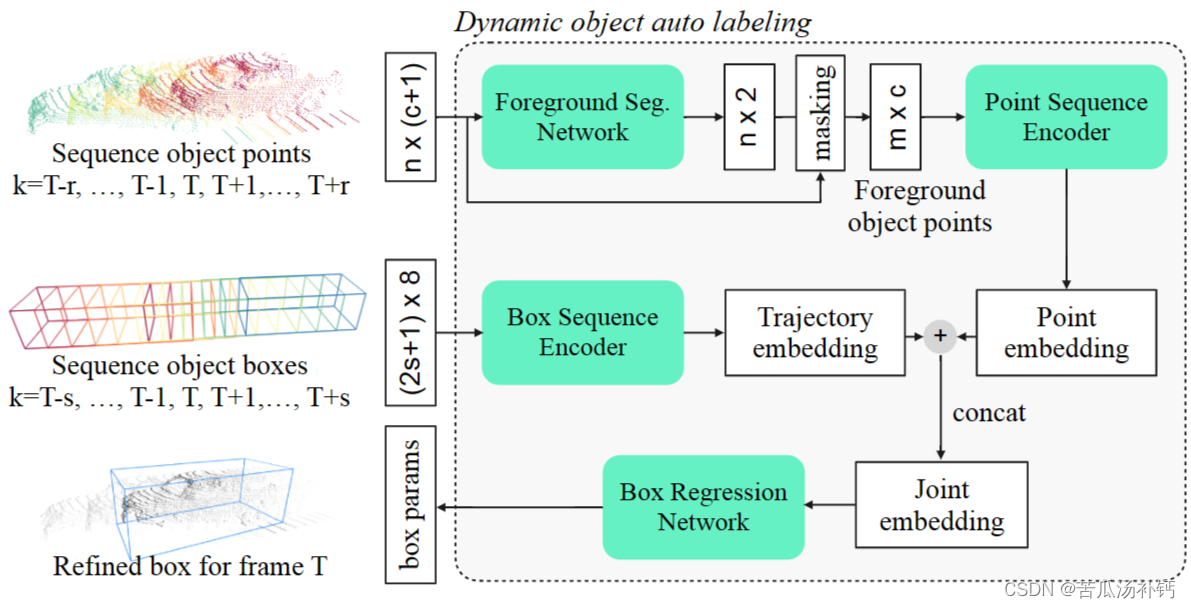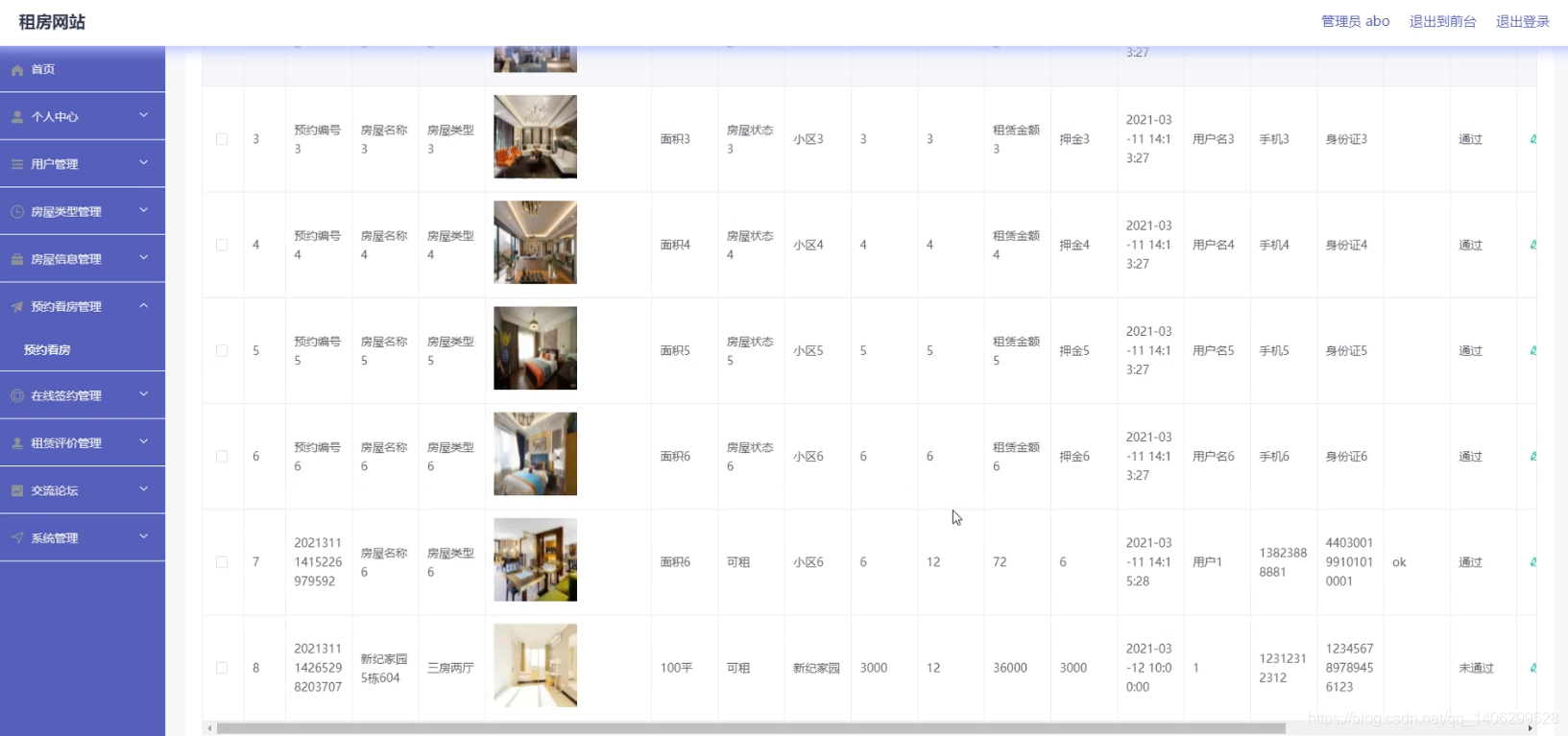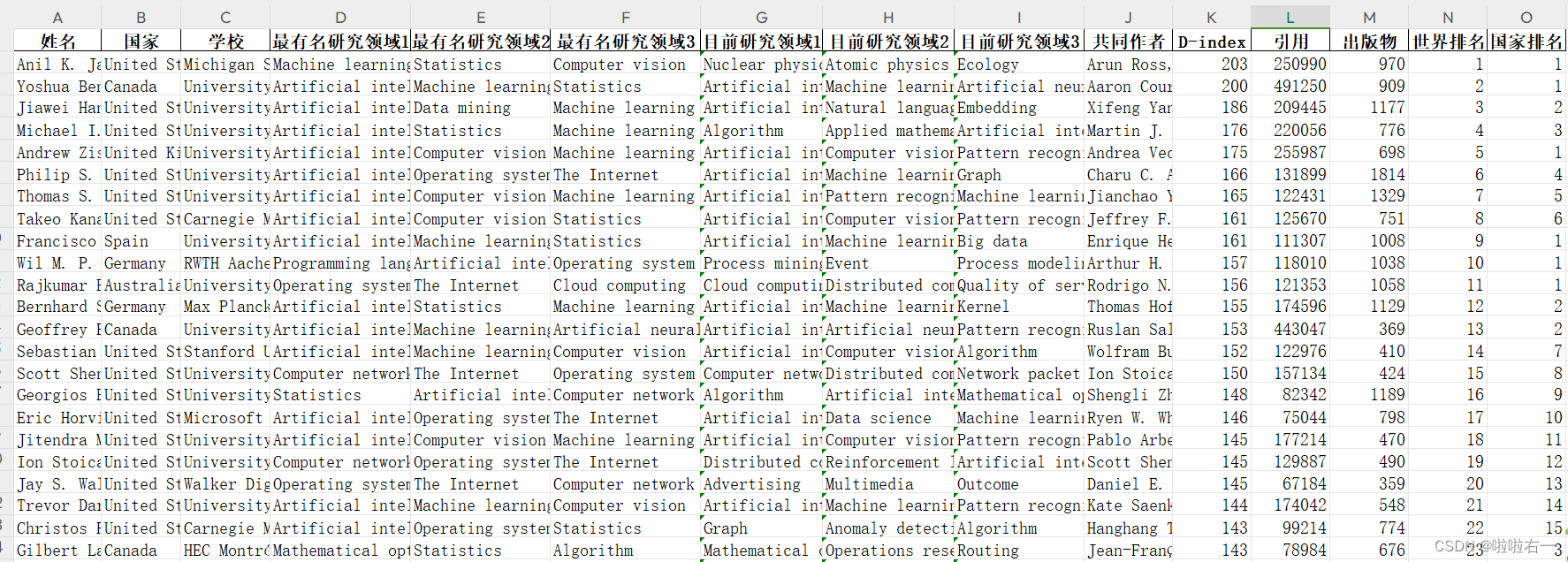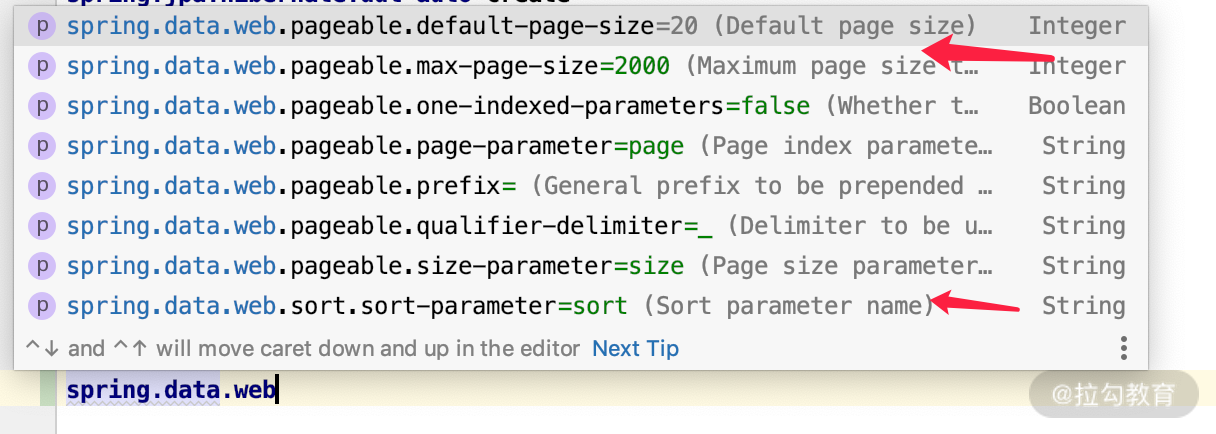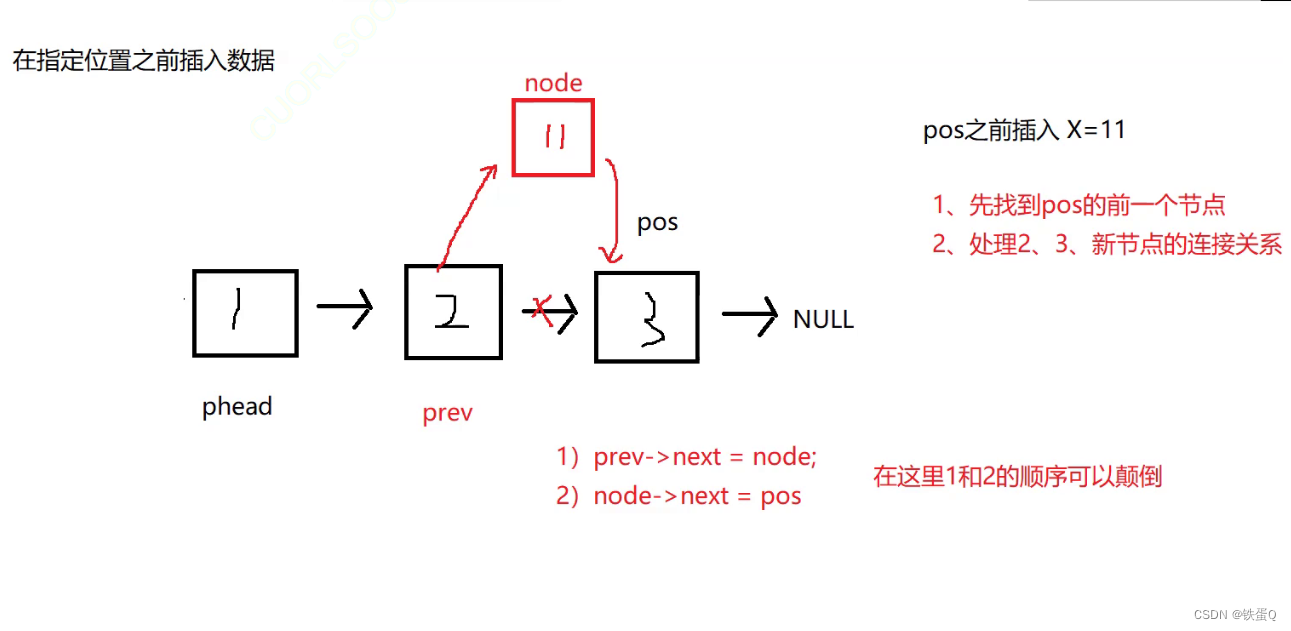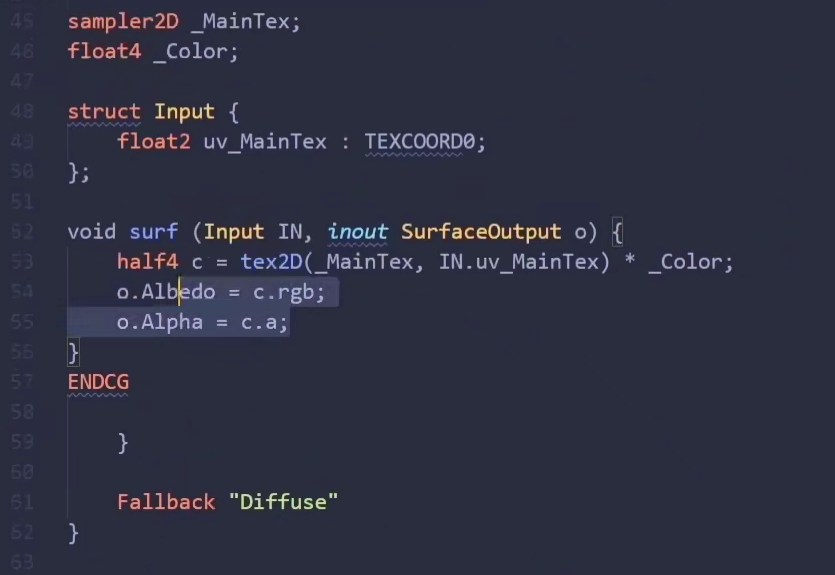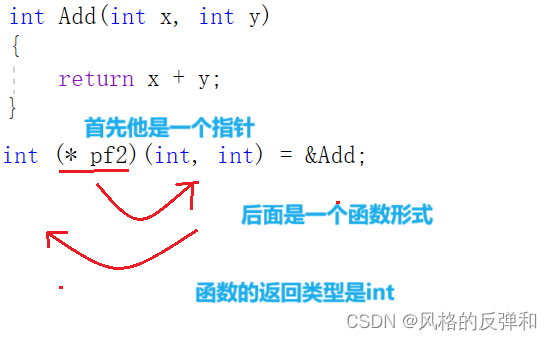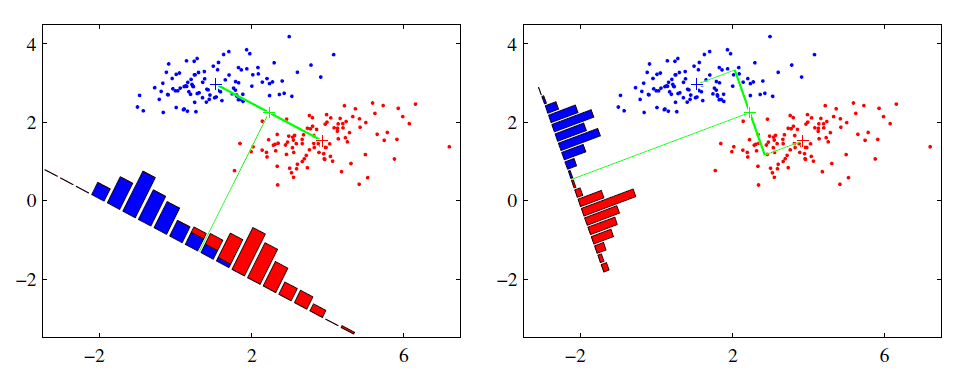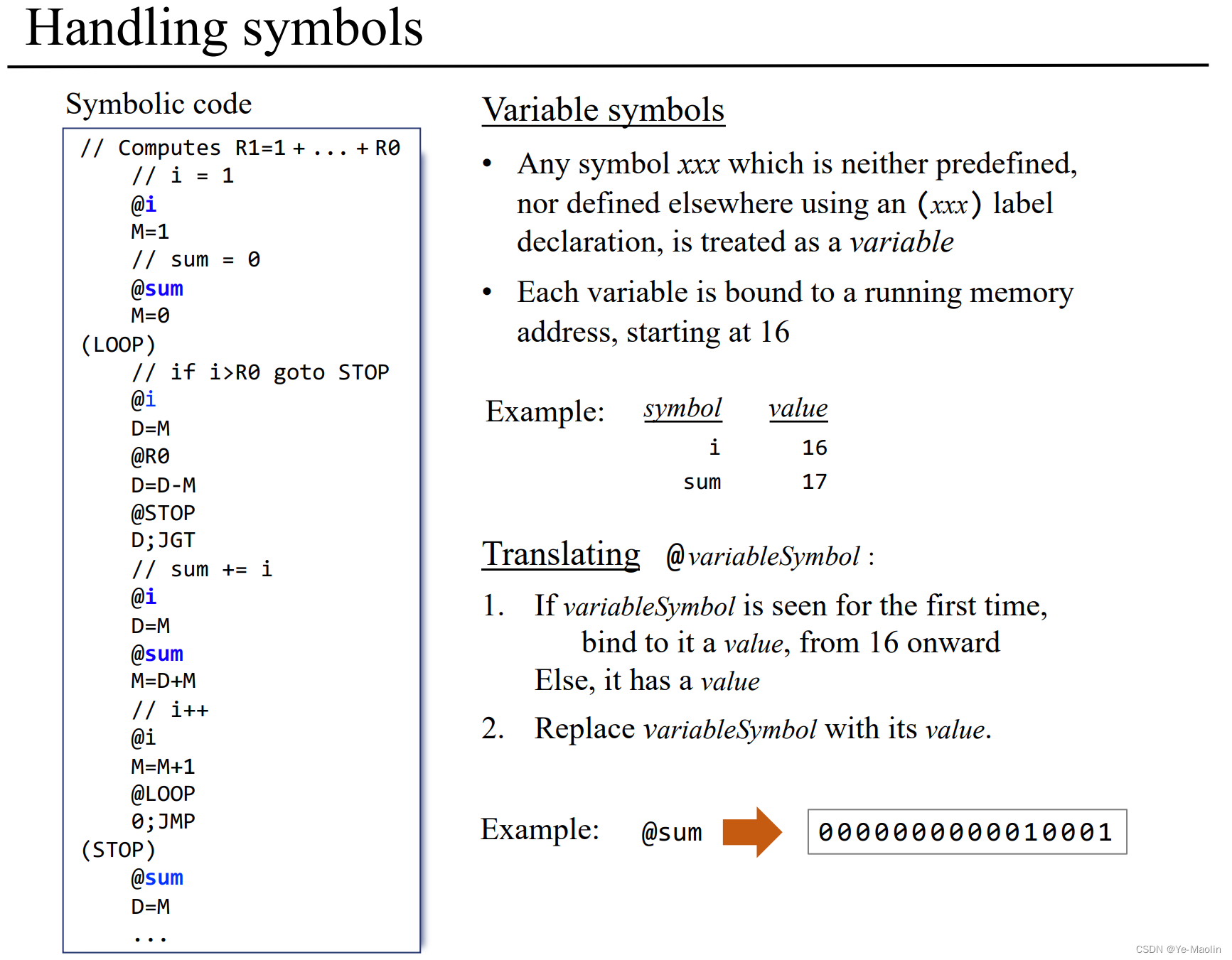文章目录
- 前言
- DE算法
- DE代码
- DE再思考
- 相关阅读
前言
过去两个月,一直在学习线性和整数规划。
今天开始,要回到智能优化算法了。用“回”这个字,主要是因为智能优化算法其实是我的老朋友了,毕竟在读博的大部分时间里,我都在和它打交道。去年也写过一篇文章:智能优化算法:分类、特点和未来,包含了我对智能优化算法的绝大部分认知和总结。这篇文章也是截至目前,我知乎上阅读量和收藏量最高的一篇文章。
不过还要继续讨论智能优化算法,主要是考虑到两方面的原因:(1)相较梯度类算法,智能优化方法是求解多维优化问题的另一大类优化方法,在理论上有机会找到全局最优解,所以如果要体系化了解求解优化问题的算法,就很难避开这个话题;(2)我认知最深刻的智能优化算法是差分进化算法(DE),该算法在连续变量上的表现确实优异,但是针对离散变量的优化问题,还是欠缺了些能力;而且DE属于多点(种群)出发的智能优化算法,对于单点(一个解)出发的智能优化算法,如模拟退火算法、禁忌搜索算法等,了解不多,其中的奥妙也还有待挖掘。
本着从易到难的思路,本文主要围绕最熟悉的DE来写,后续文章再去讨论其他类型的智能优化算法。
DE算法
关于DE的基本流程、算法特点、改进和发展方向,我之前也已经写了一篇文章:一文了解差分进化算法的前世今生,所以此处就不赘述了。
至于DE在单目标连续优化问题上的综合表现,此前文章中列举了DE在IEEE CEC 2005-2020竞赛上的结果,得到了DE在求解这类问题时表现非常优秀的结论。因为写文章的时候是2021年,所以并未统计到DE在IEEE CEC 2021-2023中的表现,这里将其补充至下表,看起来排名前列的算法都是DE的变种,所以结论并没有变化,DE依然比较强势。
| 年份 | 第一名 | 第二名 | 第三名 |
|---|---|---|---|
| 2021 | APGSK_IMODE | MadDE | NL-SHADE-RSP |
| 2022 | EA4eigN100-10 | NL-SHADE-LBC | NL-SHADE-RSP-MID |
| 2023 | ML_EA | LSHADE | AV_LSHADE_2 |
其中,2021年区分了4种情况,并按照Non-shifted、Shifted、Non-rotated Shifted和Rotated Shifted分别给出了排名。表中给出的是第一种情况下的排名结果,但事实上在其他三种情况下,前三名也都是DE算法的变种,对结论并没有影响,所以就不再浪费篇幅叙述了。
DE代码
我粗略浏览过网上的一些DE代码,包括github上的一些开源代码或集成后的优化工具包,发现他们大多数用的还是经典DE或是很早期改进的DE,而不是最/较新版DE。但实际上,最/较新版DE和经典DE在稍大规模优化问题上的表现差异,可能比蚂蚁和大象的差异还大。
为了更直观地感受这个差异,这里举个如下的例子:表里的6个算法均为DE的改进版本,分别为CoDE、SHADE、L-SHADE、SinDE、LSHADE-EpSin和EsDEr-NR,对应论文发表年份分别为2011、2013、2014、2015、2016和2018;F1-F30为30个单目标优化问题的测试实例编号; a ± b a\pm b a±b中, a a a表示最优解的平均值, b b b表示最优解的方差; w / t / l w/t/l w/t/l依次表示某个算法相比EsDEr-NR,在 w w w个问题上结果更优、 t t t个问题上结果相等、 l l l个问题上更差(根据Wilcoxon’s test结果判断,不是直接对比平均值大小);加黑数字表示为当前问题的最优解。
显然,发表于2018年的EsDEr-NR寻找最优解的能力最强,考虑到经典DE是1997年发表的,如果让EsDEr-NR去PK经典DE,优势估计会更加显著。

以下代码是EsDEr-NR的MATLAB版本,整理自大佬P-N-Suganthan的github。我在开头加了必要的注释,方便大家直接调用该算法求解具体优化问题。代码比较长,加上注释后,已经有1000行了,相比经典DE,它在种群大小 N P NP NP、缩放因子 F F F、变异算子和变异率 C r Cr Cr上,都有了一些改进,所以只需要更少的计算次数,便能得到更优的解。
%% 改进的差分进化算法, 整理by 我在开水团做运筹, 2023-10-10
%% 参考链接:https://github.com/P-N-Suganthan/CODES/blob/master/2018-SWEVO-EP-SIN.rar
%% 主函数
function [bsf_fit, bsf_sol] = EsDEr_NR(fx,problem_size, lb, ub, max_nfes)
%% 输入输出说明
% fx: 需要优化的目标函数
% problem_size: 优化变量个数
% lb: 优化变量最小值,1*problem_size(优化变量个数)数组
% ub: 优化变量最大值,1*problem_size数组
% bsf_fit: 每一代的最优值,G_Max(最大迭代代数)*1数组
% bsf_sol: 每一代的最优解,G_Max*problem_size矩阵
% max_nfes: 最大目标函数计算次数,建议值为problem_size*10000
%% 实例程序
% fx = @(x)sum(x.^2);
% problem_size = 2;
% lb = -10*ones(1,problem_size);
% ub = 10*ones(1,problem_size);
% max_nfes = problem_size*10000;
% [bsf_fit, bsf_sol] = EsDEr_NR(fx, problem_size, lb, ub, max_nfes);
%% DE本身参数
freq_inti = 0.5;
pb = 0.4;
ps = .5;
S.Ndim = problem_size;
S.Lband = lb;
S.Uband = ub;
lu = [lb;ub];
GenMaxSelected = 250; %% For local search
%% DE本身参数
%% parameter settings for L-SHADE
G_Max = G_Max_calc(problem_size,max_nfes);
p_best_rate = 0.11; %0.11
arc_rate = 1.4;
memory_size = 5;
pop_size = 18 * problem_size; %18*D
SEL = round(ps*pop_size);
max_pop_size = pop_size;
min_pop_size = 4.0;
run_funcvals = [];
nfes = 0;
%% Initialize the main population
popold = repmat(lu(1, :), pop_size, 1) + rand(pop_size, problem_size) .* ...
(repmat(lu(2, :) - lu(1, :), pop_size, 1));
pop = popold; % the old population becomes the current population
fitness = zeros(1,pop_size);
for m = 1:pop_size
fitness(m) = fx(pop(m,:));
end
fitness = fitness';
%%% Initialize LS population
flag_LS = false;
counter = 0;
popsize_LS = 10;
%%% Initialize LS population to re-start them
popLS = repmat(lu(1, :), popsize_LS, 1) + rand(popsize_LS, problem_size) .* ...
(repmat(lu(2, :) - lu(1, :), popsize_LS, 1));
fitness_LS = zeros(1,popsize_LS);
for m = 1:popsize_LS
fitness_LS(m) = fx(popLS(m,:));
end
fitness_LS = fitness_LS';
nfes = nfes + popsize_LS;
%%%%%%%%%%%%%
[Sorted_FitVector, Indecis] = sort(fitness_LS);
popLS = popLS(Indecis,:);%sorting the points based on obtaind result
%==========================================================================
%Finding the Best point in the group=======================================
BestPoint = popLS(1, :);
F = Sorted_FitVector(1);%saving the first best fitness
%%%%%%%%%%%%%
run_funcvals = [run_funcvals;fitness];
run_funcvals = [run_funcvals;fitness_LS];
bsf_fit_var = 1e+30;
bsf_index = 0;
bsf_solution = zeros(1, problem_size);
%%%%%%%%%%%%%%%%%%%%%%%% for out
for i = 1 : pop_size
nfes = nfes + 1;
if fitness(i) < bsf_fit_var
bsf_fit_var = fitness(i);
bsf_solution = pop(i, :);
bsf_index = i;
end
if nfes > max_nfes; break; end
end
bsf_fit = bsf_fit_var;
bsf_sol = bsf_solution;
%%%%%%%%%%%%%%%%%%%%%%%% for out
memory_sf = 0.5 .* ones(memory_size, 1);
memory_cr = 0.5 .* ones(memory_size, 1);
memory_freq = freq_inti*ones(memory_size, 1);
memory_pos = 1;
archive.NP = round(arc_rate * pop_size); % the maximum size of the archive
archive.pop = zeros(0, problem_size); % the solutions stored in te archive
archive.funvalues = zeros(0, 1); % the function value of the archived solutions
%% main loop
gg=0; %%% generation counter used For Sin
igen =1; %%% generation counter used For LS
flag1 = false;
flag2 = false;
counter = 0;
while nfes < max_nfes
gg=gg+1;
pop = popold; % the old population becomes the current population
[temp_fit, sorted_index] = sort(fitness, 'ascend');
mem_rand_index = ceil(memory_size * rand(pop_size, 1));
mu_sf = memory_sf(mem_rand_index);
mu_cr = memory_cr(mem_rand_index);
mu_freq = memory_freq(mem_rand_index);
%% for generating crossover rate
cr = normrnd(mu_cr, 0.1);
term_pos = find(mu_cr == -1);
cr(term_pos) = 0;
cr = min(cr, 1);
cr = max(cr, 0);
%% for generating scaling factor
sf = mu_sf + 0.1 * tan(pi * (rand(pop_size, 1) - 0.5));
pos = find(sf <= 0);
while ~ isempty(pos)
sf(pos) = mu_sf(pos) + 0.1 * tan(pi * (rand(length(pos), 1) - 0.5));
pos = find(sf <= 0);
end
freq = mu_freq + 0.1 * tan(pi*(rand(pop_size, 1) - 0.5));
pos_f = find(freq <=0);
while ~ isempty(pos_f)
freq(pos_f) = mu_freq(pos_f) + 0.1 * tan(pi * (rand(length(pos_f), 1) - 0.5));
pos_f = find(freq <= 0);
end
sf = min(sf, 1);
freq = min(freq, 1);
if(nfes <= max_nfes/2)
c=rand;
if(c<0.5)
sf = 0.5.*( sin(2.*pi.*freq_inti.*gg+pi) .* ((G_Max-gg)/G_Max) + 1 ) .*...
ones(pop_size,problem_size);
else
sf = 0.5 *( sin(2*pi .* freq(:, ones(1, problem_size)) .* gg) .* ...
(gg/G_Max) + 1 ) .* ones(pop_size,problem_size);
end
end
r0 = [1 : pop_size];
popAll = [pop; archive.pop];
fitnessAll = [fitness; archive.funvalues];
[r1, r2] = gnR1R2(pop_size, size(popAll, 1), r0);
pNP = max(round(p_best_rate * pop_size), 2); %% choose at least two best solutions
randindex = ceil(rand(1, pop_size) .* pNP); %% select from [1, 2, 3, ..., pNP]
randindex = max(1, randindex); %% to avoid the problem that rand = 0 and thus ceil(rand) = 0
pbest = pop(sorted_index(randindex), :); %% randomly choose one of the top 100p% solutions
vi = pop + sf(:, ones(1, problem_size)) .* (pbest - pop + pop(r1, :) - popAll(r2, :));
vi = boundConstraint(vi, pop, lu);
mask = rand(pop_size, problem_size) > cr(:, ones(1, problem_size));
rows = (1 : pop_size)'; cols = floor(rand(pop_size, 1) * problem_size)+1;
jrand = sub2ind([pop_size problem_size], rows, cols); mask(jrand) = false;
ui = vi; ui(mask) = pop(mask);
children_fitness = zeros(1,pop_size);
for m = 1:pop_size
children_fitness(m) = fx(ui(m,:));
end
children_fitness = children_fitness';
%%%% To check stagnation
flag = false;
bsf_fit_var_old = bsf_fit_var;
%%%%%%%%%%%%%%%%%%%%%%%% for out
for i = 1 : pop_size
nfes = nfes + 1;
if children_fitness(i) < bsf_fit_var
bsf_fit_var = children_fitness(i);
bsf_solution = ui(i, :);
bsf_index = i;
end
if nfes > max_nfes; break; end
end
bsf_fit(gg,1) = bsf_fit_var;
bsf_sol(gg,1:problem_size) = bsf_solution;
%%%%%%%%%%%%%%%%%%%%%%%% for out
dif = abs(fitness - children_fitness);
%% I == 1: the parent is better; I == 2: the offspring is better
I = (fitness > children_fitness);
goodCR = cr(I == 1);
goodF = sf(I == 1);
goodFreq = freq(I == 1);
dif_val = dif(I == 1);
% isempty(popold(I == 1, :))
archive = updateArchive(archive, popold(I == 1, :), fitness(I == 1));
[fitness, I] = min([fitness, children_fitness], [], 2);
run_funcvals = [run_funcvals; fitness];
popold = pop;
popold(I == 2, :) = ui(I == 2, :);
num_success_params = numel(goodCR);
if num_success_params > 0
sum_dif = sum(dif_val);
dif_val = dif_val / sum_dif;
%% for updating the memory of scaling factor
memory_sf(memory_pos) = (dif_val' * (goodF .^ 2)) / (dif_val' * goodF);
%% for updating the memory of crossover rate
if max(goodCR) == 0 || memory_cr(memory_pos) == -1
memory_cr(memory_pos) = -1;
else
memory_cr(memory_pos) = (dif_val' * (goodCR .^ 2)) / (dif_val' * goodCR);
end
%% for updating the memory of freq
if max(goodFreq) == 0 || memory_freq(memory_pos) == -1
memory_freq(memory_pos) = -1;
else
memory_freq(memory_pos) = (dif_val' * (goodFreq .^ 2)) / (dif_val' * goodFreq);
end
memory_pos = memory_pos + 1;
if memory_pos > memory_size; memory_pos = 1; end
end
%% for resizing the population size
% It is supposed the solution is nearly globelly optimal now,
% This part is to decrese the population size to reudce computational cost.
if nfes >= (max_nfes/2)
counter = counter + 1;
plan_pop_size = round((((min_pop_size - max_pop_size) / max_nfes) * nfes) + max_pop_size);
if pop_size > plan_pop_size
reduction_ind_num = pop_size - plan_pop_size;
if pop_size - reduction_ind_num < min_pop_size; reduction_ind_num = pop_size - min_pop_size;end
if counter == 1
count = 0;
stop = false;
niches_no = 0;
%% Change here Niche-based reduction
%% Firstly exculde the best niche (Half of the individuals)
%% Step 1: sort according fitness to pick up the best individual
[valBest indBest] = sort(fitness, 'ascend'); %%descend
best_ind = indBest(1);
best_mem = pop(best_ind,:);
%% Step 2: find E-distance between best_mem and all others
%% To Choose neighbourhood region to the best individual
Dis = pdist2(pop,best_mem,'euclidean'); % euclidean distance
%% Sort and chooose smallest distance to have higher diversity
[Dis_ordered idx_ordered] = sort(Dis, 'ascend');
best_niche_size = round(pop_size/2);
%% Select the memebrs of the best niche
best_niche = pop(idx_ordered(1:best_niche_size), :); %%% including best also so start from 1
best_niche_idx = idx_ordered(1:best_niche_size);
best_niche_fit = fitness(idx_ordered(1:best_niche_size));
%% Delete them temporaily
pop(idx_ordered(1:best_niche_size), :) = [];
popold(idx_ordered(1:best_niche_size), :) = [];
fitness(idx_ordered(1:best_niche_size)) = [];
niche_size = 20;
%% Define temp arrays to store the remainning individuals
pop_temp = [];
popold_temp = [];
fitness_temp = [];
for r = 1 : reduction_ind_num
[valBest indBest] = sort(fitness, 'ascend'); %%descend
best_ind = indBest(1);
best_mem = pop(best_ind,:);
% fitnesshere = fitness(best_ind)
Dis = pdist2(pop,best_mem,'euclidean'); % euclidean distance
%% Sort and chooose smallest distance to have higher diversity
[Dis_ordered idx_ordered] = sort(Dis, 'ascend');
[NP_curr, D] = size(pop);
if(NP_curr < niche_size)
niche_size = NP_curr;
end
niche = pop(idx_ordered(1:niche_size), :); %%% including best also so start from 1
niche_fitness = fitness(idx_ordered(1:niche_size), :);
niche_idx = idx_ordered(1:niche_size);
niches_no = niches_no + 1;
niche_idx_keep = [];
niche_idx_delete = [];
%% Now remove half of them exculding best
%% The best way to remove is to mark those individuals by -1
for t = 2 : ((niche_size/2)+1) %% To not include best and remove it, start from 2 not 1!
% fitness(idx_ordered(t)) = -1;
niche_idx_delete = [niche_idx_delete; t];
count = count + 1;
if count == reduction_ind_num
stop = true;
break;
end
end
%% Then those indecies should be removed from pop temporaily
niche(niche_idx_delete, :) = [];
niche_fitness(niche_idx_delete, :) = [];
%% Keep them to not get lost
pop_temp = [pop_temp; niche];
popold_temp = [popold_temp; niche];
fitness_temp = [fitness_temp; niche_fitness];
%% And then remove from pop to start with new niche
pop(niche_idx_delete, :) = [];
popold(niche_idx_delete, :) = [];
fitness(niche_idx_delete, :) = [];
if stop == true
break;
end
end
%% Check again as one element is -1!!
pos_fit = find(fitness == -1);
while ~ isempty(pos_fit)
fitness(pos_fit) = [];
popold(pos_fit,:) = [];
pop(pos_fit,:) = [];
pos_fit = find(fitness == -1);
end
pop = [pop; best_niche];
popold = [popold; best_niche];
fitness = [fitness; best_niche_fit];
pop_size = pop_size - reduction_ind_num;
else
pop_size = pop_size - reduction_ind_num;
SEL = round(ps*pop_size);
for r = 1 : reduction_ind_num
[valBest indBest] = sort(fitness, 'ascend');
worst_ind = indBest(end);
popold(worst_ind,:) = [];
pop(worst_ind,:) = [];
fitness(worst_ind,:) = [];
end
end
archive.NP = round(arc_rate * pop_size);
if size(archive.pop, 1) > archive.NP
rndpos = randperm(size(archive.pop, 1));
rndpos = rndpos(1 : archive.NP);
archive.pop = archive.pop(rndpos, :);
archive.funvalues = archive.funvalues(rndpos, :);
end
end
% pop_size = pop_size
end
%%%%%%%%%%%%%%% Call LS based on Gaussian works when NP is less than 20 for the first time %%%%%
if pop_size <= 20
counter = counter + 1;
end
if counter == 1
flag_LS = true;
else
flag_LS = false;
end
if flag_LS == true
r_index = randi([1 pop_size],1,popsize_LS);
%%% Pick 10 random individuals from L-SHADE pop
for gen_LS = 0 : GenMaxSelected
New_Point = [];%creating new point
FitVector = [];%creating vector of fitness functions
for i = 1 : popsize_LS
[NP, fit] = LS_Process(fx,popLS(i,:),S,igen,BestPoint);
New_Point = [New_Point;NP];
FitVector = [FitVector,fit];
end
%%%%
fittemp = FitVector;
for i = 1 : popsize_LS
%%% Update those 10 random individuals from pop L-SHADE
if FitVector(i) < fitness(r_index(i))
fitness (r_index(i)) = FitVector(i);
pop(r_index(i),:) = New_Point(i,:);
else
fittemp(i) = fitness (r_index(i));
end
%%%% Update best individual L-SHADE
if FitVector(i) < bsf_fit_var
bsf_fit_var = FitVector(i);
bsf_solution = New_Point(i,:);
end
nfes = nfes + 1;
if nfes > max_nfes; break; end
end
bsf_fit(gg,1) = bsf_fit_var;
bsf_sol(gg,1:problem_size) = bsf_solution;
%%%%%% To recored those changes
fittemp = fittemp';
run_funcvals = [run_funcvals; fittemp];
%%%%%%%%%%%%%%
[SortedFit,SortedIndex] = sort(FitVector);
New_Point = New_Point(SortedIndex,:);
BestPoint = New_Point(1,:);%first point is the best
BestFitness = SortedFit(1,1);
popLS = New_Point;
end
end
%%%%%%%%%%%%%%%%%%%%%%%%%%%%%%%%%%%%%%%%%%%%%%%%%%%
end %%%%%%%%nfes
end
function archive = updateArchive(archive, pop, funvalue)
% Update the archive with input solutions
% Step 1: Add new solution to the archive
% Step 2: Remove duplicate elements
% Step 3: If necessary, randomly remove some solutions to maintain the archive size
%
% Version: 1.1 Date: 2008/04/02
% Written by Jingqiao Zhang (jingqiao@gmail.com)
if archive.NP == 0, return; end
if size(pop, 1) ~= size(funvalue,1), error('check it'); end
% Method 2: Remove duplicate elements
popAll = [archive.pop; pop ];
funvalues = [archive.funvalues; funvalue ];
[dummy IX]= unique(popAll, 'rows');
if length(IX) < size(popAll, 1) % There exist some duplicate solutions
popAll = popAll(IX, :);
funvalues = funvalues(IX, :);
end
if size(popAll, 1) <= archive.NP % add all new individuals
archive.pop = popAll;
archive.funvalues = funvalues;
else % randomly remove some solutions
rndpos = randperm(size(popAll, 1)); % equivelent to "randperm";
rndpos = rndpos(1 : archive.NP);
archive.pop = popAll (rndpos, :);
archive.funvalues = funvalues(rndpos, :);
end
end
%This function is used as a local search, and creates some
%new points based on Gaussian Walks.
%**************************************************************************
%The input function is: %
%Point: the input point which is going to be diffused %
%S: structure of problem information %
%g: generation number %
%BestPoint: the best point in group % %
%==========================================================================
%The output function is: %
%createPoint: the new points created by Diffusion process %
%fitness: the value of fitness function %
%**************************************************************************
function [createPoint, fitness] = LS_Process(fx,Point,S,g,BestPoint)
GeneratePoint = normrnd(BestPoint, (log(g)/g)*(abs((Point - BestPoint))), [1 size(Point,2)]) + ...
(randn*BestPoint - randn*Point);
%check bounds of generated point
GeneratePoint = Bound_Checking(GeneratePoint,S.Lband,S.Uband);
% size(GeneratePoint)
% for i=1:size(Point,2)
% if GeneratePoint(1,i) > S.Uband
% fprintf('violate upper');
% end
% if GeneratePoint(1,i) < S.Lband
% fprintf('violate lower');
% end
% end
% fitness = feval(fhd,GeneratePoint',S.FuncNo);
fitness = zeros(1,length(GeneratePoint(:,1)));
for m = 1:length(GeneratePoint(:,1))
fitness(m) = fx(GeneratePoint(m,:));
end
createPoint = GeneratePoint;
%======================================================================
end
function G_Max = G_Max_calc(problem_size,max_nfes)
lb = -100*ones(1,problem_size); % 下界,行向量
ub = 100*ones(1,problem_size); % 上界,行向量
lu = [lb; ub];
G_Max0 = max_nfes; % 根据目标函数计算次数,随时调整
%% 问题参数
%% DE本身参数
freq_inti = 0.5;
% max_nfes = 30000;%5000 * problem_size; % 目标函数计算次数
pb = 0.4;
ps = .5;
S.Ndim = problem_size;
S.Lband = lb;
S.Uband = ub;
GenMaxSelected = 250; %%% For local search
%% DE本身参数
%% parameter settings for L-SHADE
p_best_rate = 0.11; %0.11
arc_rate = 1.4;
memory_size = 5;
pop_size = 18 * problem_size; %18*D
SEL = round(ps*pop_size);
max_pop_size = pop_size;
min_pop_size = 4.0;
run_funcvals = [];
nfes = 0;
%% Initialize the main population
popold = repmat(lu(1, :), pop_size, 1) + rand(pop_size, problem_size) .*...
(repmat(lu(2, :) - lu(1, :), pop_size, 1));
pop = popold; % the old population becomes the current population
fitness = zeros(1,pop_size);
for m = 1:pop_size
fitness(m) = 1;
end
fitness = fitness';
%%% Initialize LS population
flag_LS = false;
counter = 0;
popsize_LS = 10;
%%% Initialize LS population to re-start them
popLS = repmat(lu(1, :), popsize_LS, 1) + rand(popsize_LS, problem_size) .* ...
(repmat(lu(2, :) - lu(1, :), popsize_LS, 1));
fitness_LS = zeros(1,popsize_LS);
for m = 1:popsize_LS
fitness_LS(m) = 1;
end
fitness_LS = fitness_LS';
nfes = nfes + popsize_LS;
%%%%%%%%%%%%%
[Sorted_FitVector, Indecis] = sort(fitness_LS);
popLS = popLS(Indecis,:);%sorting the points based on obtaind result
%==========================================================================
%Finding the Best point in the group=======================================
BestPoint = popLS(1, :);
F = Sorted_FitVector(1);%saving the first best fitness
%%%%%%%%%%%%%
run_funcvals = [run_funcvals;fitness];
run_funcvals = [run_funcvals;fitness_LS];
bsf_fit_var = 1e+30;
bsf_index = 0;
bsf_solution = zeros(1, problem_size);
%%%%%%%%%%%%%%%%%%%%%%%% for out
for i = 1 : pop_size
nfes = nfes + 1;
if fitness(i) < bsf_fit_var
bsf_fit_var = fitness(i);
bsf_solution = pop(i, :);
bsf_index = i;
end
if nfes > max_nfes; break; end
end
%%%%%%%%%%%%%%%%%%%%%%%% for out
memory_sf = 0.5 .* ones(memory_size, 1);
memory_cr = 0.5 .* ones(memory_size, 1);
memory_freq = freq_inti*ones(memory_size, 1);
memory_pos = 1;
archive.NP = round(arc_rate * pop_size); % the maximum size of the archive
archive.pop = zeros(0, problem_size); % the solutions stored in te archive
archive.funvalues = zeros(0, 1); % the function value of the archived solutions
%% main loop
gg=0; %%% generation counter used For Sin
igen =1; %%% generation counter used For LS
flag1 = false;
flag2 = false;
counter = 0;
while nfes < max_nfes
gg=gg+1;
% [gg, bsf_fit_var]
pop = popold; % the old population becomes the current population
ui = popold;
children_fitness = zeros(1,pop_size);
for m = 1:pop_size
children_fitness(m) = 1;
end
children_fitness = children_fitness';
%%%% To check stagnation
flag = false;
bsf_fit_var_old = bsf_fit_var;
%%%%%%%%%%%%%%%%%%%%%%%% for out
for i = 1 : pop_size
nfes = nfes + 1;
if children_fitness(i) < bsf_fit_var
bsf_fit_var = children_fitness(i);
bsf_solution = ui(i, :);
bsf_index = i;
end
if nfes > max_nfes; break; end
end
%%%%%%%%%%%%%%%%%%%%%%%% for out
%% for resizing the population size
if (nfes >= (max_nfes/2))
counter = counter + 1;
plan_pop_size = round((((min_pop_size - max_pop_size) / max_nfes) * nfes) + max_pop_size);
if pop_size > plan_pop_size
reduction_ind_num = pop_size - plan_pop_size;
if pop_size - reduction_ind_num < min_pop_size; reduction_ind_num = pop_size - min_pop_size;end
if counter == 1
count = 0;
stop = false;
niches_no = 0;
%% Change here Niche-based reduction
%% Firstly exculde the best niche (Half of the individuals)
%% Step 1: sort according fitness to pick up the best individual
[valBest indBest] = sort(fitness, 'ascend'); %%descend
best_ind = indBest(1);
best_mem = pop(best_ind,:);
%% Step 2: find E-distance between best_mem and all others
%% To Choose neighbourhood region to the best individual
Dis = pdist2(pop,best_mem,'euclidean'); % euclidean distance
%% Sort and chooose smallest distance to have higher diversity
[Dis_ordered idx_ordered] = sort(Dis, 'ascend');
best_niche_size = round(pop_size/2);
%% Select the memebrs of the best niche
best_niche = pop(idx_ordered(1:best_niche_size), :); %%% including best also so start from 1
best_niche_idx = idx_ordered(1:best_niche_size);
best_niche_fit = fitness(idx_ordered(1:best_niche_size));
%% Delete them temporaily
pop(idx_ordered(1:best_niche_size), :) = [];
popold(idx_ordered(1:best_niche_size), :) = [];
fitness(idx_ordered(1:best_niche_size)) = [];
niche_size = 20;
%% Define temp arrays to store the remainning individuals
pop_temp = [];
popold_temp = [];
fitness_temp = [];
for r = 1 : reduction_ind_num
[valBest indBest] = sort(fitness, 'ascend'); %%descend
best_ind = indBest(1);
best_mem = pop(best_ind,:);
% fitnesshere = fitness(best_ind)
Dis = pdist2(pop,best_mem,'euclidean'); % euclidean distance
%% Sort and chooose smallest distance to have higher diversity
[Dis_ordered idx_ordered] = sort(Dis, 'ascend');
[NP_curr, D] = size(pop);
if(NP_curr < niche_size)
niche_size = NP_curr;
end
niche = pop(idx_ordered(1:niche_size), :); %%% including best also so start from 1
niche_fitness = fitness(idx_ordered(1:niche_size), :);
niche_idx = idx_ordered(1:niche_size);
niches_no = niches_no + 1;
niche_idx_keep = [];
niche_idx_delete = [];
%% Now remove half of them exculding best
%% The best way to remove is to mark those individuals by -1
for t = 2 : ((niche_size/2)+1) %% To not include best and remove it, start from 2 not 1!
% fitness(idx_ordered(t)) = -1;
niche_idx_delete = [niche_idx_delete; t];
count = count + 1;
if count == reduction_ind_num
stop = true;
break;
end
end
%% Then those indecies should be removed from pop temporaily
niche(niche_idx_delete, :) = [];
niche_fitness(niche_idx_delete, :) = [];
%% Keep them to not get lost
pop_temp = [pop_temp; niche];
popold_temp = [popold_temp; niche];
fitness_temp = [fitness_temp; niche_fitness];
%% And then remove from pop to start with new niche
pop(niche_idx_delete, :) = [];
popold(niche_idx_delete, :) = [];
fitness(niche_idx_delete, :) = [];
if stop == true
break;
end
end
%% Check again as one element is -1!!
pos_fit = find(fitness == -1);
while ~ isempty(pos_fit)
fitness(pos_fit) = [];
popold(pos_fit,:) = [];
pop(pos_fit,:) = [];
pos_fit = find(fitness == -1);
end
pop = [pop; best_niche];
popold = [popold; best_niche];
fitness = [fitness; best_niche_fit];
pop_size = pop_size - reduction_ind_num;
else
pop_size = pop_size - reduction_ind_num;
SEL = round(ps*pop_size);
for r = 1 : reduction_ind_num
[valBest indBest] = sort(fitness, 'ascend');
worst_ind = indBest(end);
popold(worst_ind,:) = [];
pop(worst_ind,:) = [];
fitness(worst_ind,:) = [];
end
end
archive.NP = round(arc_rate * pop_size);
if size(archive.pop, 1) > archive.NP
rndpos = randperm(size(archive.pop, 1));
rndpos = rndpos(1 : archive.NP);
archive.pop = archive.pop(rndpos, :);
archive.funvalues = archive.funvalues(rndpos, :);
end
end
% pop_size = pop_size
end
%%%%%%%%%%%%%%% Call LS based on Gaussian works when NP is less than 20 for the first time %%%%%
if pop_size <= 20
counter = counter + 1;
end
if counter == 1
flag_LS = true;
else
flag_LS = false;
end
if flag_LS == true
r_index = randi([1 pop_size],1,popsize_LS);
%%% Pick 10 random individuals from L-SHADE pop
for gen_LS = 0 : GenMaxSelected
New_Point = [];%creating new point
FitVector = [];%creating vector of fitness functions
for i = 1 : popsize_LS
NP = pop(1,:);
fit = 1;
New_Point = [New_Point;NP];
FitVector = [FitVector,fit];
end
%%%%
fittemp = FitVector;
for i = 1 : popsize_LS
%%% Update those 10 random individuals from pop L-SHADE
if FitVector(i) < fitness(r_index(i))
fitness (r_index(i)) = FitVector(i);
pop(r_index(i),:) = New_Point(i,:);
else
fittemp(i) = fitness (r_index(i));
end
%%%% Update best individual L-SHADE
if FitVector(i) < bsf_fit_var
bsf_fit_var = FitVector(i);
bsf_solution = New_Point(i,:);
end
nfes = nfes + 1;
if nfes > max_nfes; break; end
end
%%%%%% To recored those changes
fittemp = fittemp';
run_funcvals = [run_funcvals; fittemp];
%%%%%%%%%%%%%%
[SortedFit,SortedIndex] = sort(FitVector);
New_Point = New_Point(SortedIndex,:);
BestPoint = New_Point(1,:);%first point is the best
BestFitness = SortedFit(1,1);
popLS = New_Point;
end
end
%%%%%%%%%%%%%%%%%%%%%%%%%%%%%%%%%%%%%%%%%%%%%%%%%%%
end %%%%%%%%nfes
G_Max = gg;
end
function [r1, r2] = gnR1R2(NP1, NP2, r0)
% gnA1A2 generate two column vectors r1 and r2 of size NP1 & NP2, respectively
% r1's elements are choosen from {1, 2, ..., NP1} & r1(i) ~= r0(i)
% r2's elements are choosen from {1, 2, ..., NP2} & r2(i) ~= r1(i) & r2(i) ~= r0(i)
%
% Call:
% [r1 r2 ...] = gnA1A2(NP1) % r0 is set to be (1:NP1)'
% [r1 r2 ...] = gnA1A2(NP1, r0) % r0 should be of length NP1
%
% Version: 2.1 Date: 2008/07/01
% Written by Jingqiao Zhang (jingqiao@gmail.com)
NP0 = length(r0);
r1 = floor(rand(1, NP0) * NP1) + 1;
%for i = 1 : inf
for i = 1 : 99999999
pos = (r1 == r0);
if sum(pos) == 0
break;
else % regenerate r1 if it is equal to r0
r1(pos) = floor(rand(1, sum(pos)) * NP1) + 1;
end
if i > 1000, % this has never happened so far
error('Can not genrate r1 in 1000 iterations');
end
end
r2 = floor(rand(1, NP0) * NP2) + 1;
%for i = 1 : inf
for i = 1 : 99999999
pos = ((r2 == r1) | (r2 == r0));
if sum(pos)==0
break;
else % regenerate r2 if it is equal to r0 or r1
r2(pos) = floor(rand(1, sum(pos)) * NP2) + 1;
end
if i > 1000, % this has never happened so far
error('Can not genrate r2 in 1000 iterations');
end
end
end
%This function is used for L-SHADE bound checking
function vi = boundConstraint (vi, pop, lu)
% if the boundary constraint is violated, set the value to be the middle
% of the previous value and the bound
%
[NP, D] = size(pop); % the population size and the problem's dimension
%% check the lower bound
xl = repmat(lu(1, :), NP, 1);
pos = vi < xl;
vi(pos) = (pop(pos) + xl(pos)) / 2;
% vi(pos) = xl(pos);
%% check the upper bound
xu = repmat(lu(2, :), NP, 1);
pos = vi > xu;
vi(pos) = (pop(pos) + xu(pos)) / 2;
% vi(pos) = xu(pos);
end
%This function is used for LS bound checking
function p = Bound_Checking(p,lowB,upB)
for i = 1 : size(p,1)
upper = double(gt(p(i,:),upB));
lower = double(lt(p(i,:),lowB));
up = find(upper == 1);
lo = find(lower == 1);
if (size(up,2)+ size(lo,2) > 0 )
for j = 1 : size(up,2)
% fprintf('here');
p(i, up(j)) = (upB(up(j)) - lowB(up(j)))*rand()...
+ lowB(up(j));
end
for j = 1 : size(lo,2)
p(i, lo(j)) = (upB(lo(j)) - lowB(lo(j)))*rand()...
+ lowB(lo(j));
end
end
end
end
DE再思考
我在读博时,潜心于改进DE的相关研究,虽然没有啥特别突出的结果,但却也感情至深。
可惜的是,工作这三年,几乎没有哪个落地项目用到DE算法。即使扩展到自己在业界的所有见闻和各种多点出发的智能优化算法,也只有某司的第一代骑手路径规划算法和达达的骑手路径规划算法使用过遗传算法。
仔细思考了一下使用率低的原因,主要是因为有更好的替代方案:大部分实际场景下的优化问题,要么对最优性有需求,此时会优先被建模为线性/整数规划问题来求解;要么对计算效率有需求,此时会倾向于选择启发式算法或基于单点的智能优化算法。因此,DE这类多点出发的智能优化算法,在工业上应用时就有些尴尬。
可能有人会问了,如果模型本身是非线性的,无法直接被建模为线性/整数规划问题,同时业务又追求最优性呢?看起来DE就很契合需求了,但实际场景下研发同学会通过变量离散化的方式,将原来的非线性模型转为0-1整数规划模型来求解,因为这种方式下得到的解可以保证为离散状态下的全局最优解,而且可解释性也强于DE。
当然了,如果不考虑工业应用,只聊理论研究的话,DE还是能打的。在这方面,结合当前的认知,总结个人思考如下:
- DE在最优性指标上优于其他类型算法,可能是因为其他算法的迭代深度不够。针对DE算法的改进,是有很多团队持续做了很多年的,而其他算法好像并没有被研究的那么深刻;如果其他算法被充分优化,说不定也能够得到和目前改进DE指标相当甚至更好的指标。
- DE算法历经多个版本的迭代,可能对测试函数产生了过拟合。虽然每一届CEC的测试函数可能都会有些变化,但是总体来说,差异并不大,而DE更优性的验证,基本上都是依赖在这些测试函数上的优化指标,所以有一定的过拟合风险;当然,目前判断这个风险并不大,因为我读博期间,也将该算法用于航天领域的轨道优化问题,效果还不错。
- 相比继续投入精力研究DE本身,研究不同算法的最佳融合,可能会更有前景。回顾最近三年IEEE CEC的第一名算法:APGSK_IMODE(2021)是GSK+IMODE,EA4eigN100-10(2022)是CMA-ES+CoBiDE+jSO+IDE,ML_EA(2023)的论文暂时没发表,代码也还没开源,但是我联系过作者,被告知可以认为是EA4eigN100-10的优化版本,也是一种融合算法。
相关阅读
之前这一章的名字一直叫:参考文献,最近总觉得不太合适,因为很多有相关性但是没被参考的文章就不太方便放进来了。所以特改章节名称为:相关阅读,这样以后就可以不用太在意参考量,同时还能兼顾对原创文章的尊重。
智能优化算法:分类、特点和未来(包含CEC2005-2020结果): https://zhuanlan.zhihu.com/p/536981691
CEC2021结果: https://github.com/P-N-Suganthan/2021-SO-BCO
CEC2022结果: https://github.com/P-N-Suganthan/2022-SO-BO
CEC2023结果: http://www5.zzu.edu.cn/ecilab/info/1036/1344.htm
一文了解差分进化算法的前世今生: https://blog.csdn.net/taozibaby/article/details/115382831
单目标连续优化问题测试集: https://blog.csdn.net/taozibaby/article/details/115035209
EsDEr-NR论文: https://www.sciencedirect.com/science/article/abs/pii/S2210650217305321
大佬P-N-Suganthan的github: https://github.com/P-N-Suganthan
线性规划和单纯形法-原理篇: https://zhuanlan.zhihu.com/p/648363488
线性规划模型-工程应用篇: https://zhuanlan.zhihu.com/p/649791641
求解整数规划问题的割平面法和分支定界法: https://zhuanlan.zhihu.com/p/652678113
